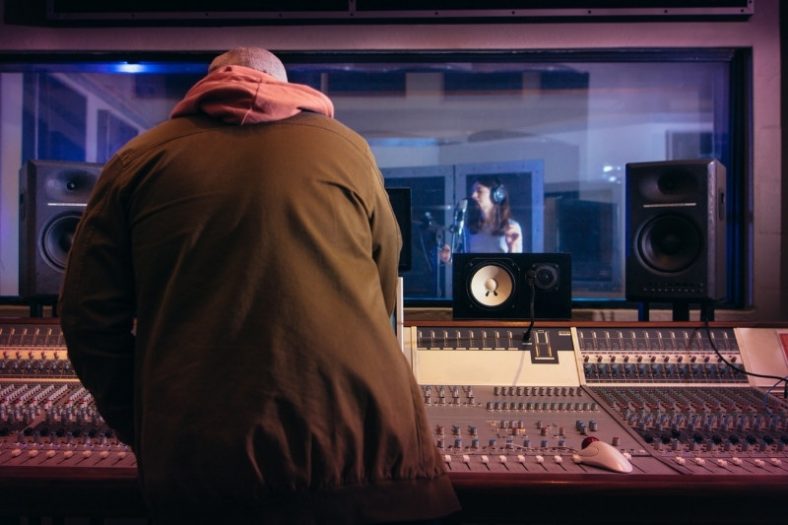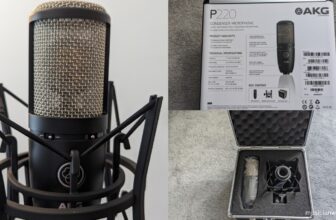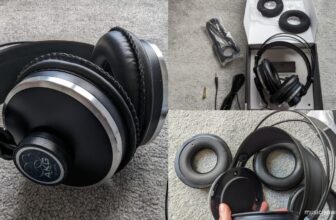How to Isolate Vocals From a Song (5 Options)

Vocal isolation is the process of separating the vocals in a song from its instrumental. There are many reasons for doing so, such as trying to make a remix or removing the vocals to create karaoke and play-along backing tracks.
In the mixing process, vocals are normally recorded separately and processed as an isolated vocal track. The same applies to most instruments. These isolated tracks, which are combined to create a full song, are often called stems.
If you have access to the stems of a song, vocal isolation shouldn’t be a problem for you. But since this rarely happens, the process of isolating vocals can be challenging.
Contents
Why is it so hard to isolate vocals?
Isolating vocals can be hard because vocals take up a lot of frequencies in a song. One may think that the instruments in a mix can be convincingly divided into frequencies: the bass sits in the low-frequencies, the vocals in the middle, the hats in the highs, and so on. But it’s not that simple.
Even sounds that have a very limited frequency range (such as a kick drum) aren’t just made up of a divisible set of frequencies. When it comes to vocals, which tend to occupy a wide range of frequencies, it only gets more problematic. Since there’s a lot of frequency overlap in a full song, common production tools such as EQ or multiband compressors will rarely do the trick.
However, nothing that is worth it is ever easy. While there’s no 100% flawless method for isolating vocals, there are plenty of approaches that may help you to convincingly separate the vocals in a song from the other instruments.
Let’s take a look at the available solutions and understand the pros and cons of each one.
1. Search for the acapella track
If your goal is to isolate the vocals of a popular song, you may be in luck. The Internet is filled with acapella tracks of well-known tunes, and these can be very handy if you’re trying to create a remix or add some spice to one of your productions.
Google can be very effective for finding acapella tracks of commercially-released songs, and so do Reddit and YouTube. You should also give Acapellas4U a try: it’s a very useful website with thousands of free downloadable acapella tracks.

The upside
This method is as easy as it gets, and requires zero knowledge about music production. In many cases, it also allows you to play with a top-quality track, as many of the acapella audios on the web were directly taken from a song’s stems.
The downside
This will only work if you manage to find the acapella. It’s wonderful if you’re trying to isolate the vocals of a popular song, but virtually worthless if you’re working with a track few people know about.
2. Use the instrumental to apply phase cancellation
To apply this method, you need to have two things: an audio track with the full song and another with just the instrumental of the song.
Phase cancellation happens when two signals of the same frequency are out of phase, making for a reduction in the overall level of such signals. When the signals are 100% out of phase, they will cancel one another completely, effectively becoming muted.
This means that you can invert the phase of the instrumental track and play it simultaneously with the full track to cancel the instrumental section. By doing so, only the vocals will continue to play (as they were not canceled), meaning they can be recorded inside your DAW to make for a pretty good acapella audio track.
There are plenty of tools available for inverting the phase of an audio track, and pretty much every DAW has one. In Ableton Live, you can use Utility to achieve this effect.
In most plugins and audio effects, phase-inversion actions are represented by the icon ‘Ø.’ Remember: to effectively invert the phase of a stereo track, you need to apply phase inversion to both the left and right channels.
The upside
This method is so effective that it will feel like magic! Nine times out of ten, you’ll be impressed by how clean and natural the isolated vocals will sound.
The downside
If you don’t have the instrumental version of the full song you’re working with, you will not be able to apply this method.
3. Use iZotope RX’s Music Rebalance Algorithm
iZotope RX is a professional audio editing tool that features a Music Rebalance option (from version 7 onwards). This option allows you to quickly divide a full song into stems, isolating all tracks by Voice, Bass, Percussion, and Other (melodies, pads, etc.).
To apply this method, you just need to drag the full song to the stand-alone version of RX, select Music Rebalance, adjust the sensitivity (if needed), and render the stems. RX’s algorithm will do all the heavy lifting, and voilà—you’ll have an isolated vocal in less than two minutes!
The upside
RX is a top-quality audio-editing software that makes for a favorite among pros and can isolate vocals quickly and successfully in many situations.
The downside
RX is a paid plugin not everyone can afford. Additionally, its Music Rebalance feature is still far from perfect; while it works wonders sometimes, not all isolated vocals will be as clean as you’d wish.
4. Use Audacity’s Voice Reduction and Isolation effect
Audacity is a free audio editing software that’s been around for ages and continues to be popular among amateurs and pros alike (especially in the broadcasting industry). While limited, Audacity has some outstanding features for processing audio, including a Voice Reduction and Isolation effect.
To use Audacity’s Voice Reduction and Isolation effect to isolate the vocals from a song, you need to open the full song with Audacity, select ‘Voice Reduction and Isolation’ under ‘Effects,’ select ‘Isolate Vocal’ in the drop-down menu, and hit ‘Preview.’
Depending on how good it works, you should also adjust the ‘Strength’ fader (more strength makes for a more isolated vocal, but it can also affect its overall sound quality).
The upside
It’s a free method that works relatively well and requires no prior music-production experience.
The downside
Sadly, Audacity’s Voice Reduction and Isolation effect should only be used in desperate times. When it works properly and the instrumental is completely removed, it can make the isolated vocals sound pretty thin—some essential frequencies tend to be removed, causing the vocals to feel unnatural and even glitchy. If you want to preserve the way the vocals sound, bits of the instrumental tend to stay audible in the background.
5. Use a vocal-isolation website
While isolating vocals from a full song is not easy, there are fortunately plenty of developers out there trying to come up with a definite solution for the problem. For this reason, the number of free vocal isolation websites on the Internet continues to grow. Hold your horses, though: while there’s plenty to choose from, none of them is perfect.
Vocal isolation websites tend to be simple: you just need to upload the song, hit a button, and download the separated stems of such a song. Depending on the website, additional services and options may be available.
If you’re interested in this method, I recommend the following websites:
Splitter.ai – A favorite among music producers that promises to divide any full song into up to five stems. It’s free, even though some additional options are only available for paid subscribers.
Acapella Extractor – It’s in the name: just drag a full song in there, wait a few seconds, and download the acapella of the song. It’s free, quick, and simple.
Vocal Remover – Works similarly to Acapella Extractor, with the plus of having other free features for audio professionals, including a handy BPM Finder and Audio Converter.
The upside
When it works, it makes for a quick, easy, and painless method for isolating vocals from a song.
The downside
It’s a throw of the dice: I’ve tested these websites, and they do work amazingly in some cases, but not always. Sometimes, your acapella track will be either poorly isolated or very glitchy, meaning these websites aren’t 100% reliable.
Summary
Music technology has made huge advancements in the last few years, and vocal isolation is not an exception. However, there’s still a lot of work to be done when it comes to effectively separating a full song into good-quality audio stems.
Audio professionals are still looking out for the perfect solution that will solve the issue once and for all. But for now, you should be okay with at least one of the five methods listed above.






